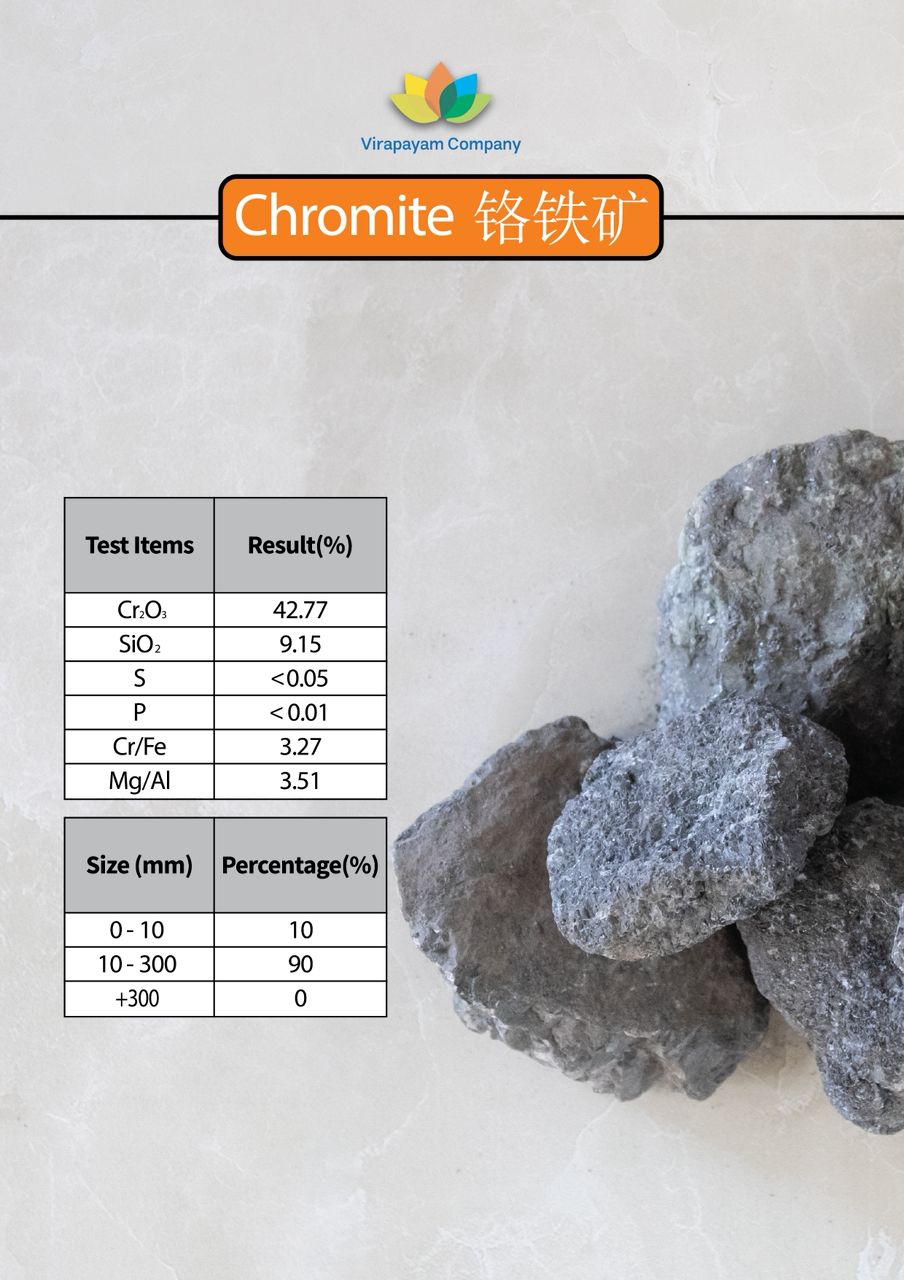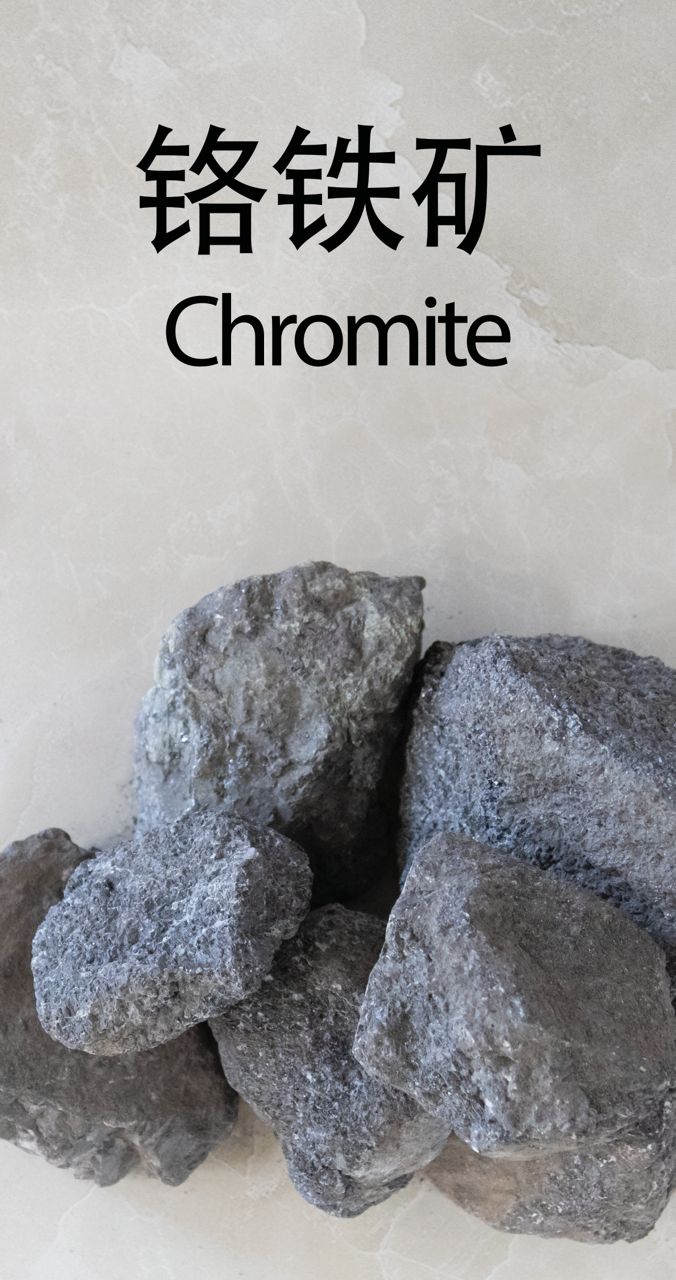
🔥Chromite – Earth's Deep-Born Metallic Gem
Hidden within the folds of ultramafic rocks, Chromite (FeCr₂O₄) is the Earth's natural alloy-maker—a dark, lustrous mineral born in fire and pressure, yet essential to the modern world. From deep mantle roots to layered igneous chambers, Chromite reveals a story of geologic intensity and elemental strength.
📌 Basic Identification
- Name: Chromite
- Chemical Formula: FeCr₂O₄
- Mineral Group: Oxides (Spinel Group)
- Crystal System: Isometric (Cubic)
- Mohs Hardness: 5.5
- Specific Gravity: ~4.5–5.1 g/cm³
- Luster: Metallic to submetallic
- Transparency: Opaque
- Streak: Dark brown
- Cleavage: None
- Fracture: Uneven to subconchoidal
- Color: Black to brownish-black
🌍 Geological Formation and Origin
Chromite crystallizes directly from magma, especially in mafic and ultramafic igneous rocks. Its formation is tightly linked to the cooling of mantle-derived magmas and their accumulation in specific geological settings.
🧬 Modes of Formation:
- Layered Intrusions: Forms as stratified bands in slowly cooling magma chambers (e.g., Bushveld Complex, South Africa)
- Ophiolite Suites: Appears as podiform bodies within serpentinized peridotites, marking ancient oceanic crust now exposed on land
- Magmatic Segregation: As magma differentiates, Cr-rich phases like chromite settle and concentrate
💎 Associated Minerals:
Olivine, pyroxenes, serpentine, magnetite, platinum-group minerals (PGMs)
🌎 Global Occurrence and Deposits
Chromite is found in diverse geological regions, particularly those associated with ancient tectonic and magmatic activity.
Major Deposits:
- South Africa: Bushveld Complex – world’s largest reserve
- Kazakhstan: Kempirsai Massif – major podiform chromite bodies
- India: Odisha and Karnataka – rich chromite-bearing ultramafics
- Turkey: Western Anatolia – classic podiform occurrences
- Iran: Ophiolite belts in Hormozgan, Fars, Kerman provinces
- Zimbabwe: Great Dyke – chromite seams in mafic sills
Forms Found:
- Layered seams in igneous complexes
- Disseminated grains in peridotites
- Lenticular or podiform bodies in ophiolites
🔬 Mineralogical and Physical Characteristics
- Crystal Habit:
Rarely forms visible crystals; mostly occurs as massive to granular aggregates or fine disseminations. - Color and Luster:
Deep metallic black with a submetallic sheen; surfaces may appear oily or iridescent under light. - Magnetic Behavior:
Weakly magnetic due to iron content—useful in field identification and mineral separation. - Refractory Nature:
High melting point and chemical stability make chromite essential in high-temperature geological environments.
🧪 Chemical Properties and Stability
- Stable in both oxidizing and reducing geological environments.
- Insoluble in most acids, except under extreme conditions.
- Often unaltered in weathering zones, making it a reliable tracer in placer and geochemical exploration.
🧭 Environmental and Geological Significance
- Tectonic Tracer: Presence of chromite-rich ophiolites indicates ancient oceanic crust and subduction-related tectonics
- Mantle Processes: The Cr/Fe ratio in chromite reflects the source composition of magmas and degree of partial melting
- Petrogenetic Marker: A key tool for identifying the genesis and evolution of layered mafic intrusions and mantle-derived rocks
🛑 Handling and Preservation
- Durable and not prone to physical alteration
- Best stored in dry, labeled containers for geochemical or petrographic study
- Use gloves or clean tools when handling samples intended for trace-element analysis
✅ Summary
Chromite is a robust and enduring oxide mineral, forged in the depths of Earth and found across tectonic boundaries and igneous heartlands. From South Africa’s layered giants to Iran’s ancient ophiolites, chromite is a silent witness to Earth’s most dynamic processes. Its deep-black sheen, mineralogical integrity, and geochemical relevance give it a prominent role in the mineralogical and geological landscape.

